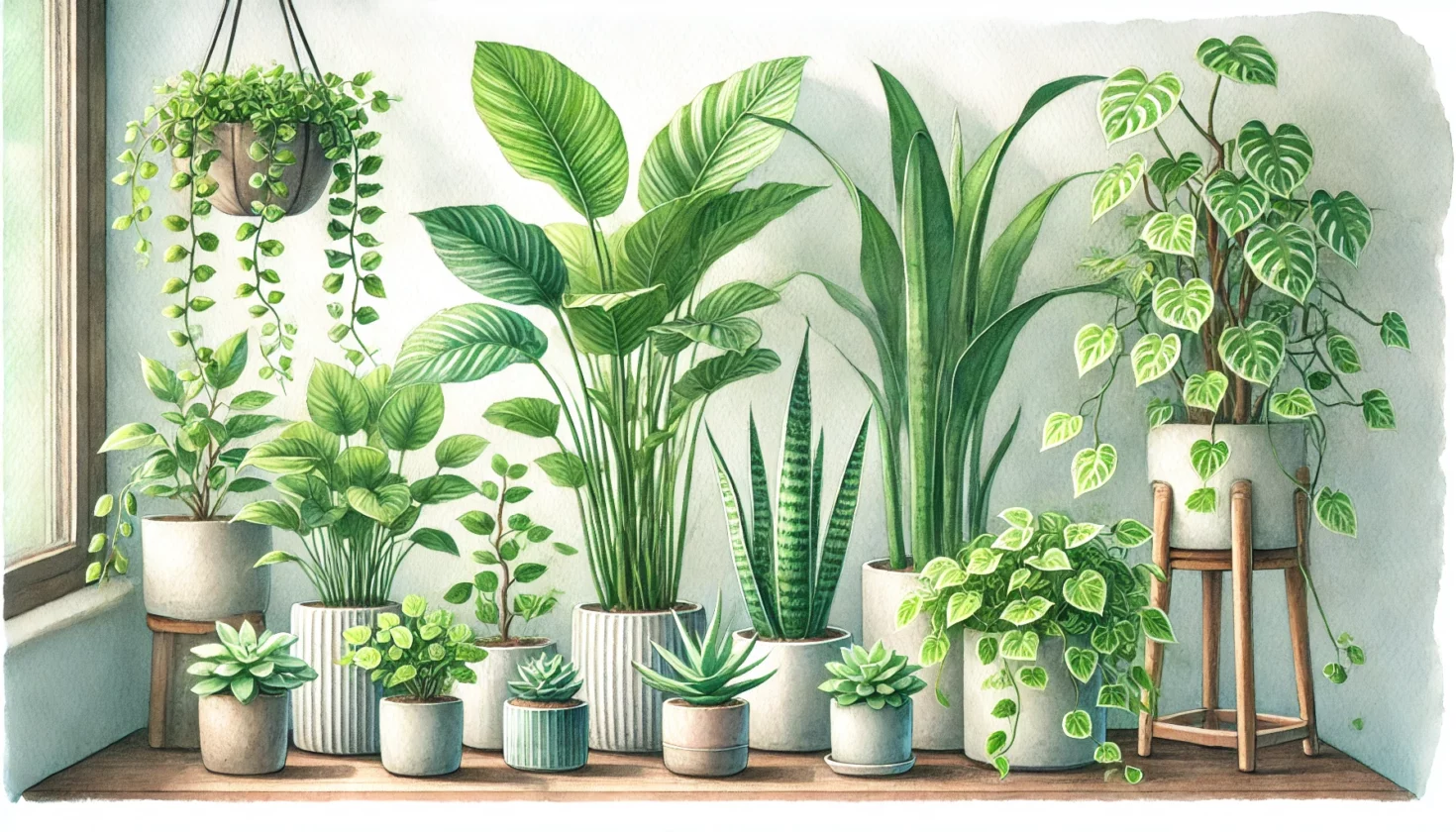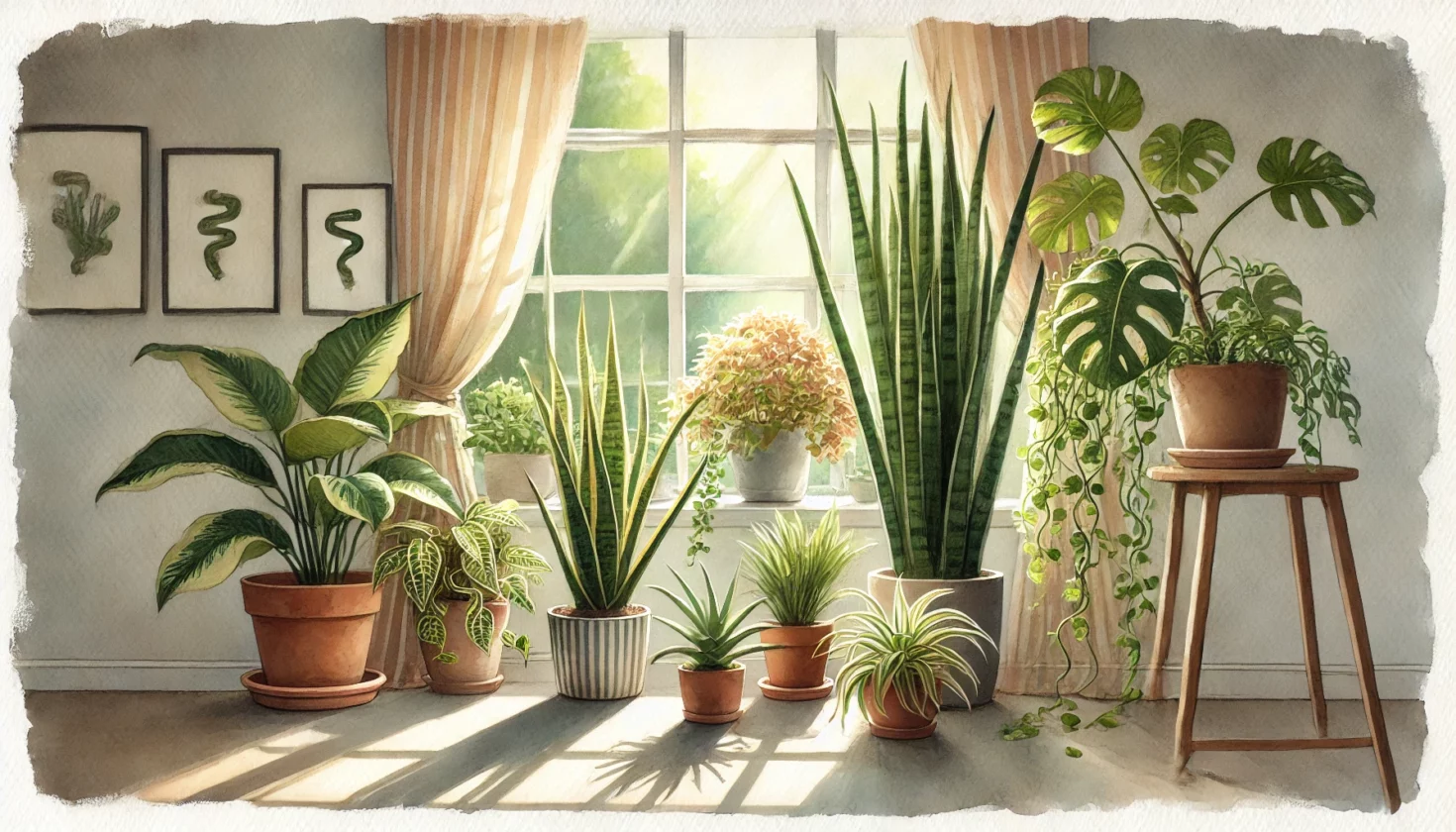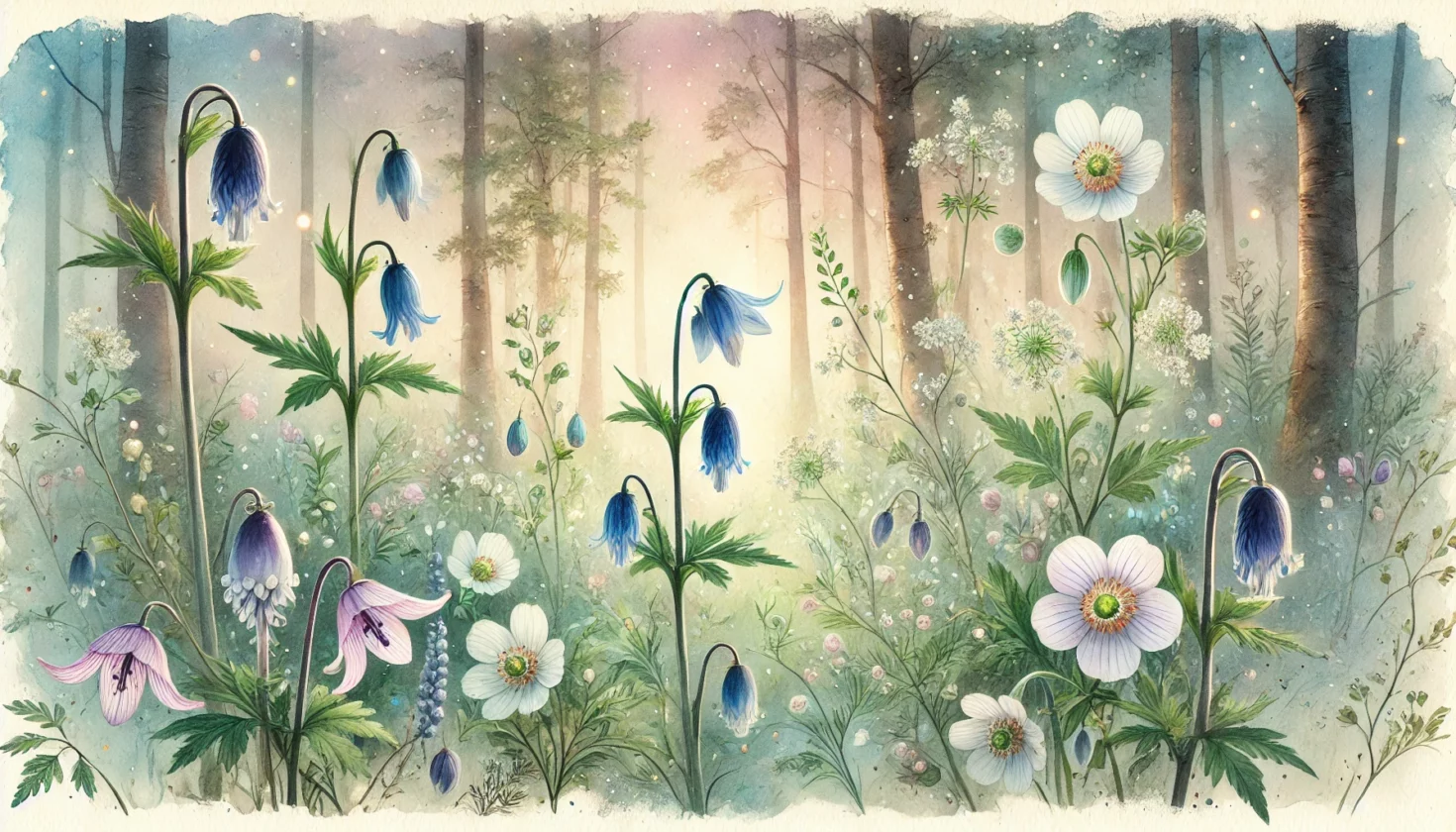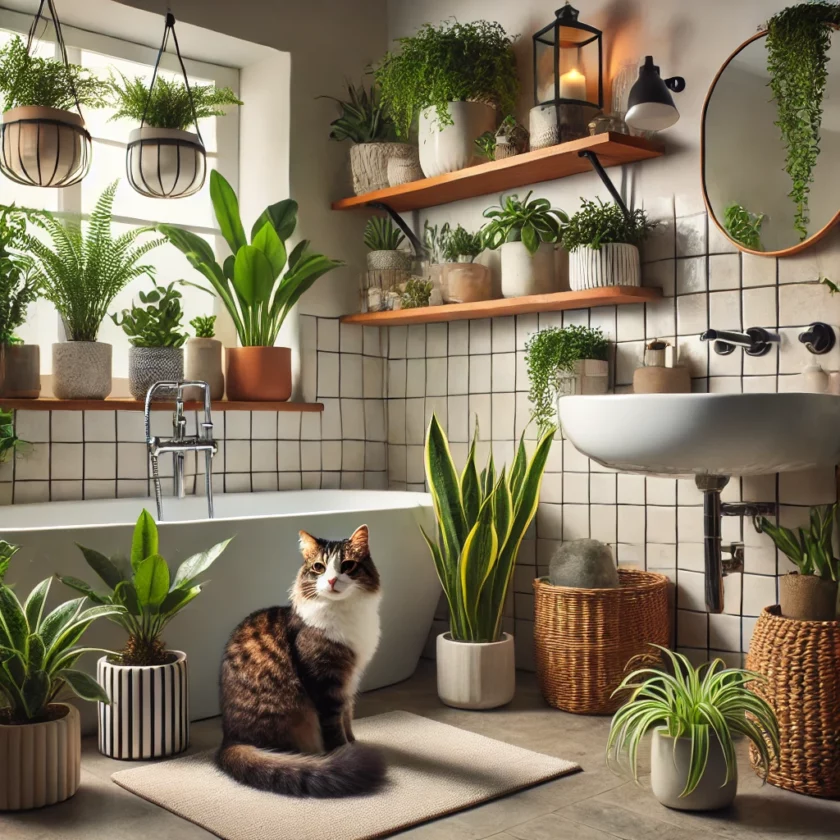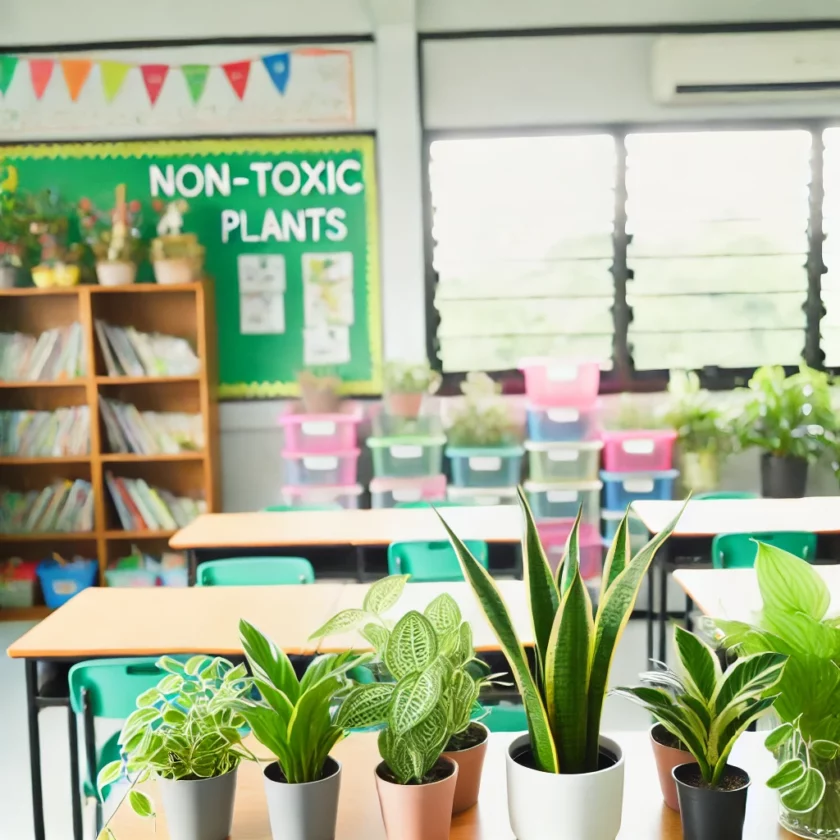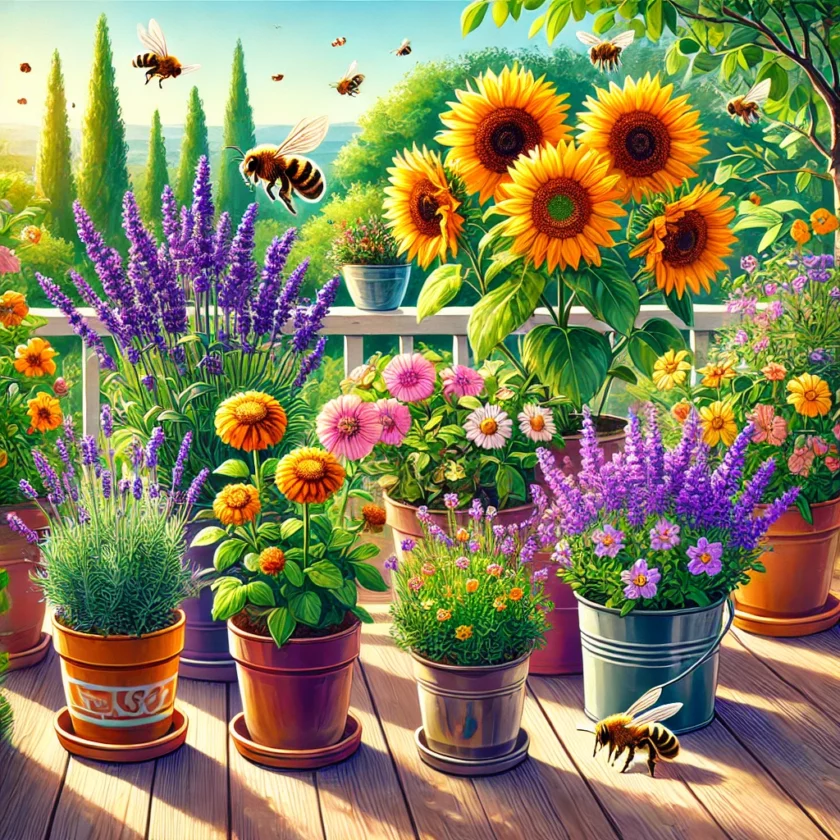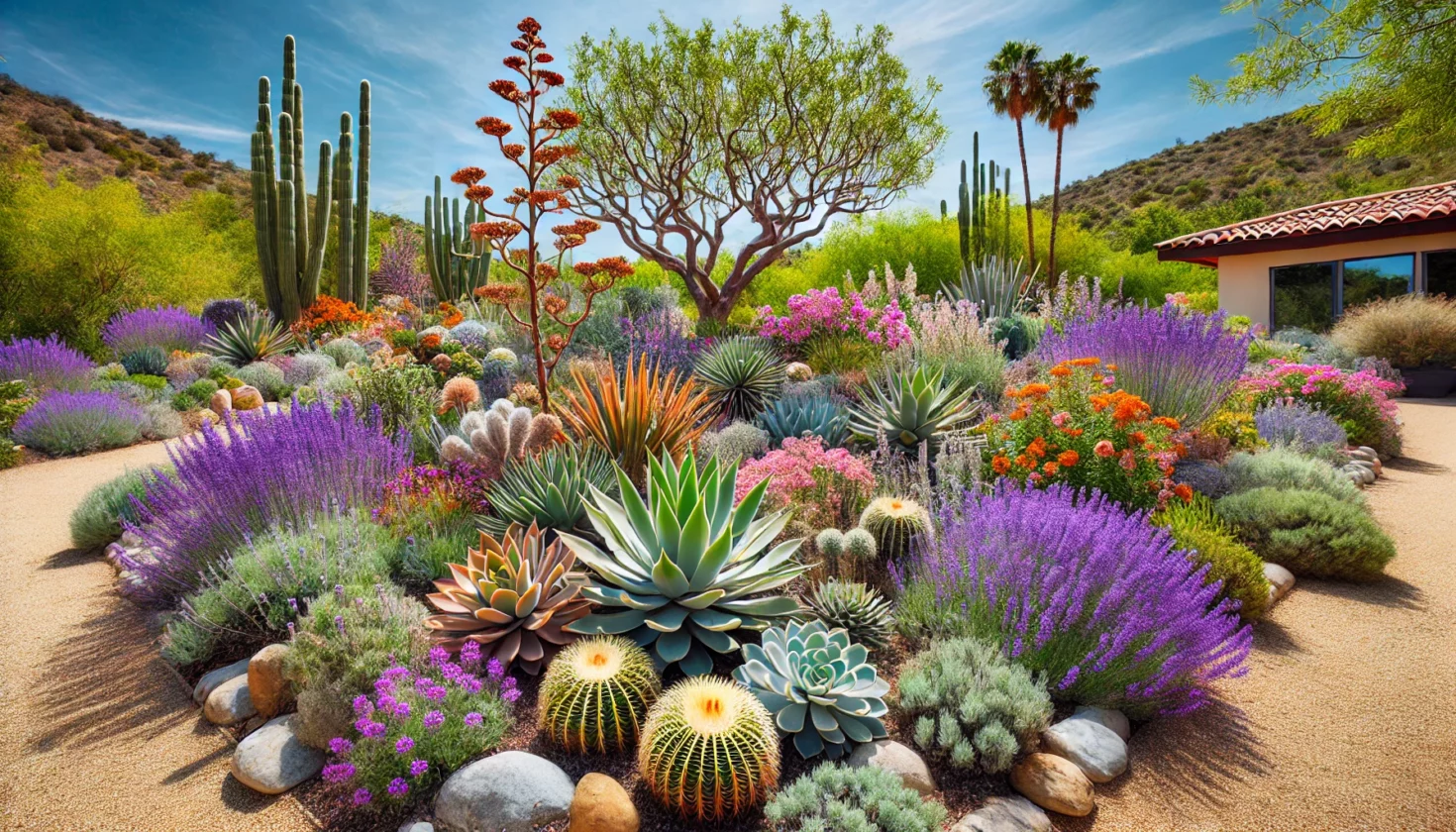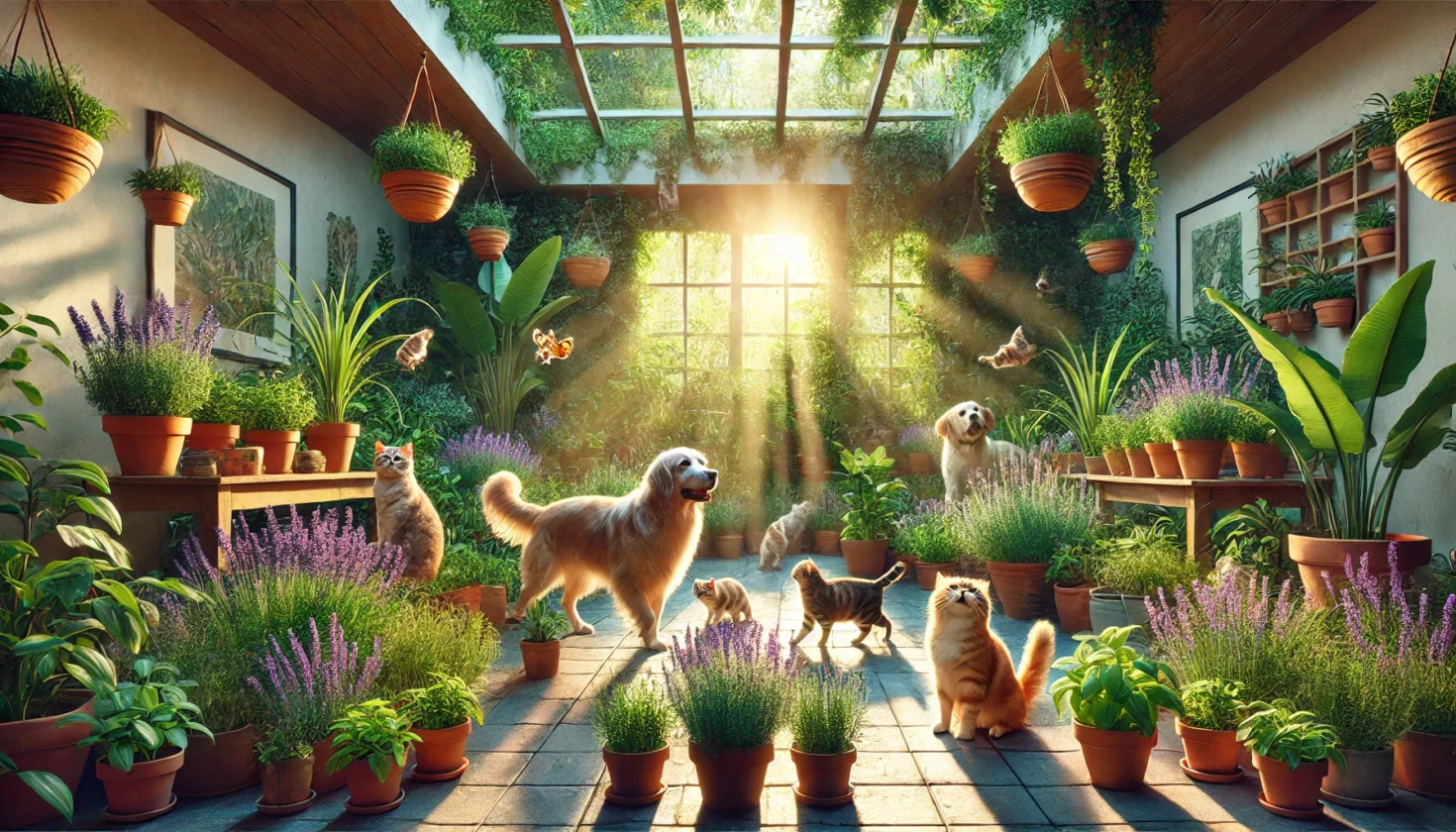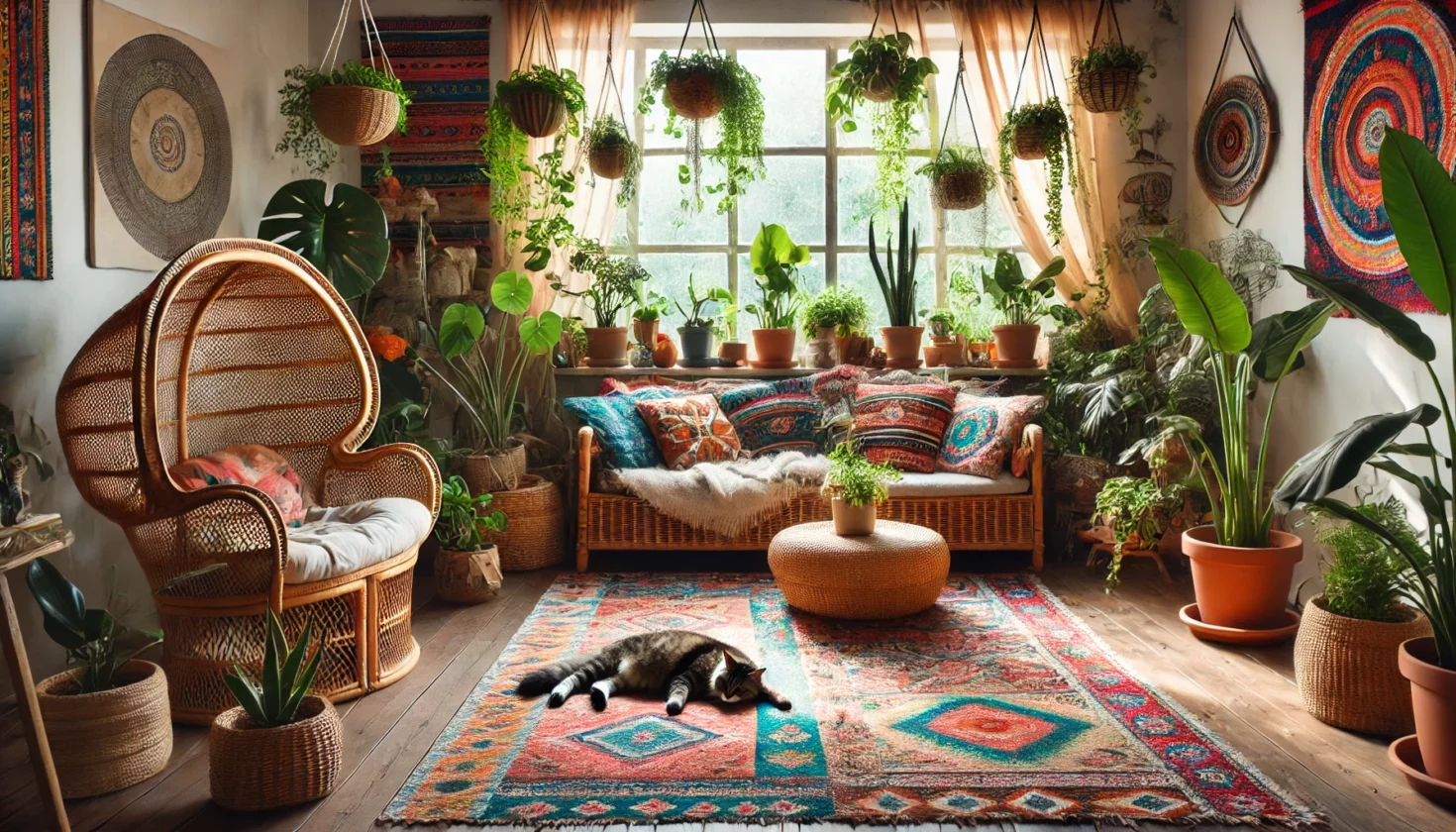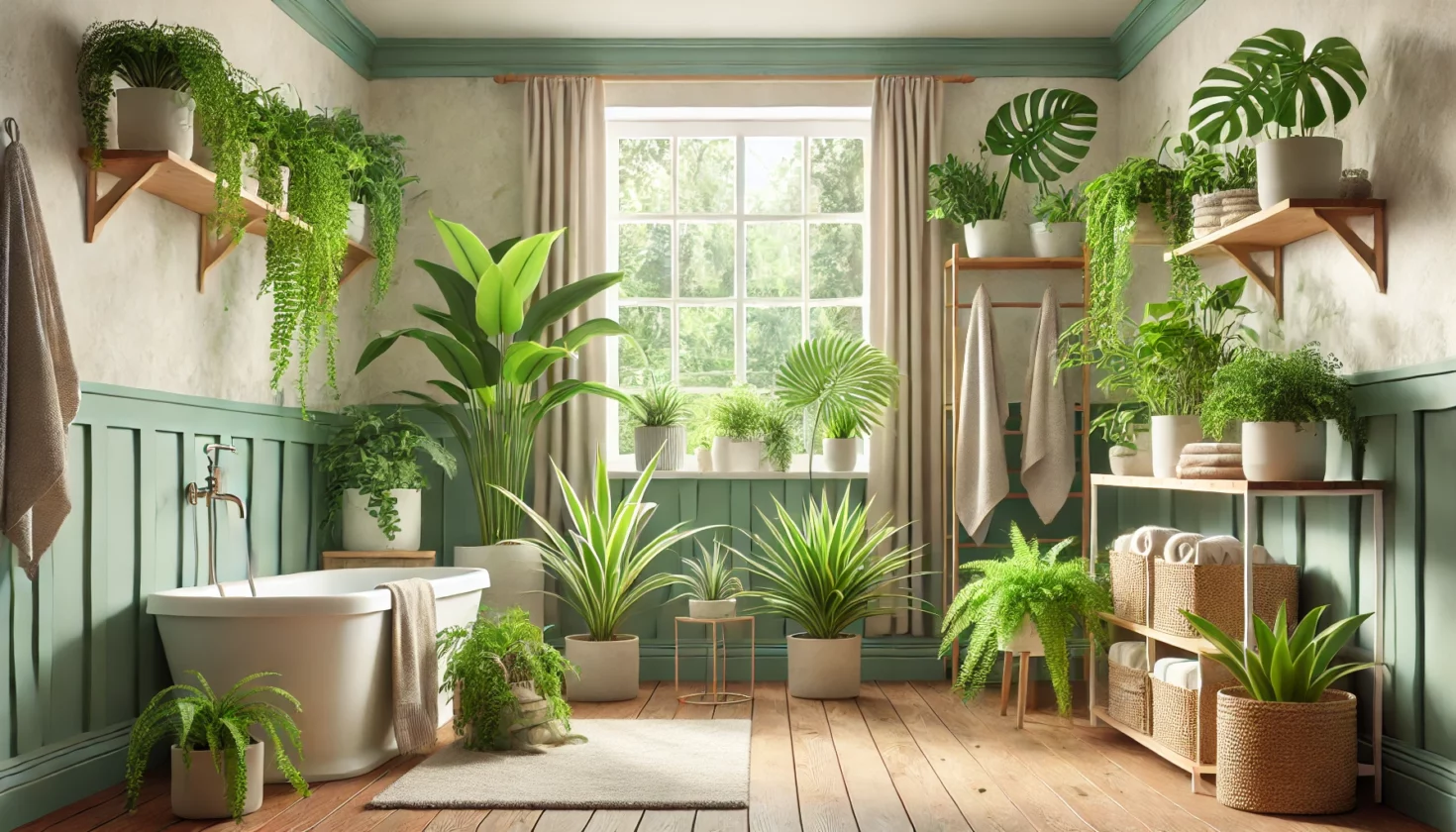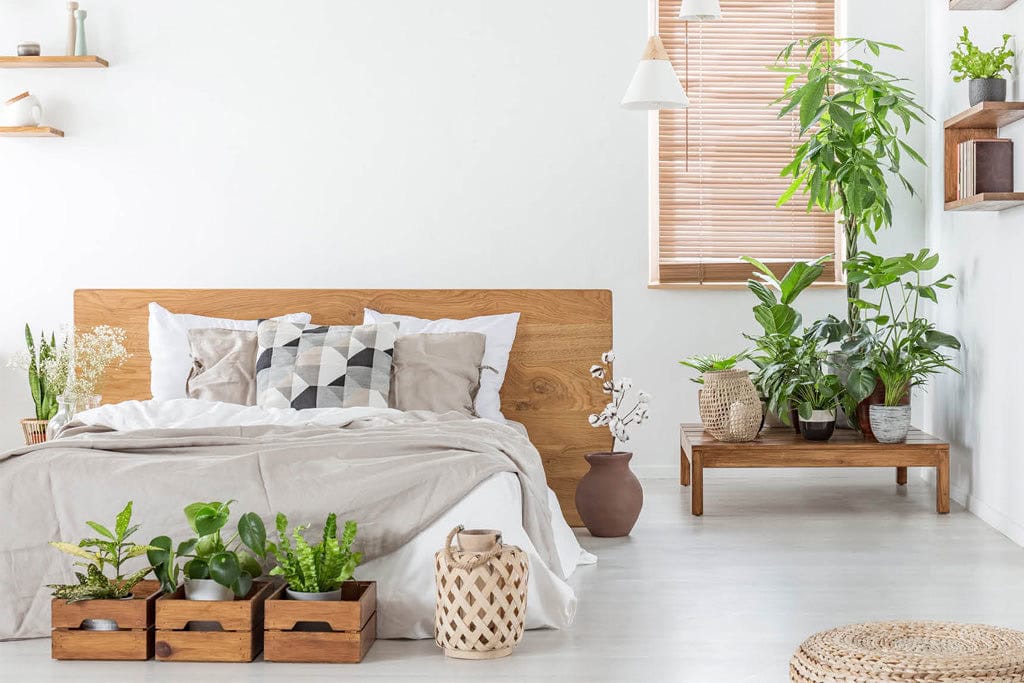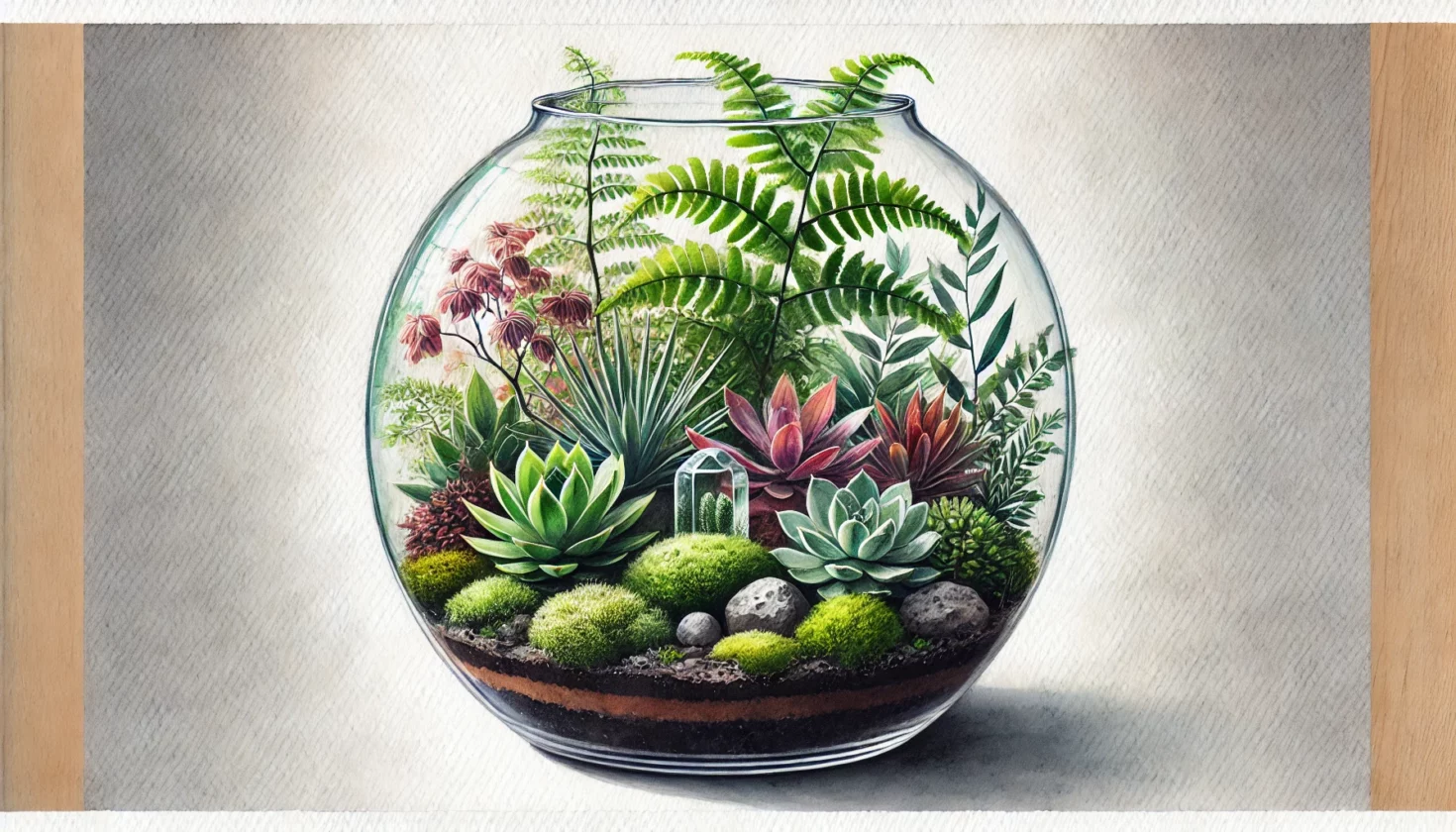Best Dog-Friendly Plants: Safe Greenery for Your Furry Friends

As a dog owner, you know your furry friend loves to explore, sniff, and sometimes even taste everything in sight. But did you know that many common houseplants are toxic to dogs if ingested? From causing mild symptoms like vomiting and diarrhea to severe health problems, the wrong plant can spell trouble. That’s where dog-friendly plants come in! Not only do they add a touch of nature to your home, but they also improve air quality without putting your pooch at risk.
Best Plants Safe for Dogs
1. Spider Plant (Chlorophytum)
The Spider Plant, scientifically known as Chlorophytum comosum, is a popular houseplant that’s not only attractive but also safe for dogs. It features long, arching leaves that are often striped with white, creating a vibrant contrast. The plant gets its name from the small plantlets or ‘spiderettes’ that dangle from the mother plant, resembling spiders on a web. These spiderettes can be easily propagated, making Spider Plants great for sharing with friends or expanding your indoor garden.
Spider Plants are known for their air-purifying qualities, as they can help remove toxins such as formaldehyde and xylene from the air. This makes them not only a safe choice for homes with pets but also a healthy one.
Here’s a quick overview of the Spider Plant’s characteristics and care requirements:
| Characteristic | Detail |
|---|---|
| Scientific Name | Chlorophytum comosum |
| Common Name | Spider Plant |
| Toxicity | Non-toxic to dogs (ASPCA) |
| Light Requirements | Prefers bright, indirect light |
| Watering Frequency | Water when the top inch of soil is dry |
| Soil Type | Well-draining potting mix |
| Humidity | Average to high humidity |
| Propagation | Easily propagated from plantlets (spiderettes) |
| Additional Benefits | Air-purifying, easy to care for |
With its easy-going nature and charming appearance, the Spider Plant is an excellent choice for dog owners looking to add some greenery to their home without worrying about their pet’s safety.
2. Ponytail Palm (Beaucarnea recurvata)
The Ponytail Palm, also known as Beaucarnea recurvata, is a unique and eye-catching houseplant that is perfectly safe for dogs. Despite its common name, it is not actually a palm but a member of the agave family. This plant features a distinctive, bulbous trunk, which stores water and gives it a characteristic swollen appearance, earning it the nickname “elephant’s foot.” From the top of this trunk springs a cascade of long, thin leaves that resemble a ponytail, giving the plant its name.
One of the most appealing aspects of the Ponytail Palm is its low-maintenance nature. It’s a drought-tolerant plant that can survive with minimal watering, making it ideal for those who may not have a green thumb or who often forget to water their plants. Its slow growth rate and compact size also make it a great choice for indoor spaces.
Here’s a detailed overview of the Ponytail Palm’s characteristics and care requirements:
| Characteristic | Detail |
|---|---|
| Scientific Name | Beaucarnea recurvata |
| Common Name | Ponytail Palm |
| Toxicity | Non-toxic to dogs (ASPCA) |
| Light Requirements | Prefers bright, indirect light but can tolerate lower light conditions |
| Watering Frequency | Allow the soil to dry out completely between waterings; water sparingly |
| Soil Type | Well-draining soil or cactus mix |
| Humidity | Low to average humidity |
| Growth Rate | Slow-growing |
| Additional Benefits | Drought-tolerant, low-maintenance, unique appearance |
The Ponytail Palm is a fantastic choice for dog owners looking for a stylish and safe plant that adds a touch of the exotic to their home decor. Its resilience and ease of care make it a joy to grow, and its non-toxic nature ensures that it’s a safe addition to any pet-friendly household.
3. Bromeliad (Aechmea)
Bromeliads, specifically those of the Aechmea genus, are stunning houseplants known for their vibrant, long-lasting flowers and strappy, often colorful leaves. These tropical plants add a burst of color and texture to any indoor space, and they are safe for dogs, making them a fantastic choice for pet owners.
Aechmea bromeliads are particularly popular for their ease of care and the striking appearance of their inflorescences, which can last for several months. The flowers emerge from a central cup, surrounded by a rosette of leaves, creating a dramatic and eye-catching display. The foliage itself can be quite attractive, with some varieties featuring patterns or shades of pink, red, or purple.
Here’s a detailed overview of the Bromeliad (Aechmea) characteristics and care requirements:
| Characteristic | Detail |
|---|---|
| Scientific Name | Aechmea spp. |
| Common Name | Bromeliad |
| Toxicity | Non-toxic to dogs (ASPCA) |
| Light Requirements | Bright, indirect light is best; can tolerate lower light levels |
| Watering Frequency | Keep the central cup filled with water; change water regularly to prevent stagnation |
| Soil Type | Well-draining, orchid or bromeliad mix |
| Humidity | High humidity preferred |
| Growth Rate | Slow to moderate |
| Additional Benefits | Long-lasting flowers, air-purifying |
Caring for Aechmea bromeliads is relatively simple. They thrive in bright, indirect light and require minimal watering, making them well-suited to indoor environments. The central cup of the plant should be kept filled with water, which provides both moisture and humidity to the plant. It’s important to flush out this water regularly to prevent stagnation and the buildup of minerals.
Bromeliads are a wonderful option for dog owners looking to add a touch of the tropics to their home. With their striking flowers and colorful foliage, Aechmea bromeliads offer both beauty and peace of mind, knowing that they are safe for your furry companions.
4. African Violet (Saintpaulia Ionantha)
African Violets, scientifically known as Saintpaulia ionantha, are beloved for their charming and colorful blooms that can brighten any indoor space. These petite plants are not only attractive but also non-toxic to dogs, making them a wonderful addition to a pet-friendly home.
The African Violet is characterized by its fuzzy, deep green leaves and beautiful flowers that come in a variety of shades, including purple, pink, blue, and white. The flowers are often bi-colored or have a range of hues, adding to their appeal. African Violets are compact in size, typically growing no more than 6 inches in height and width, which makes them perfect for small spaces like windowsills or tabletops.
Here’s a detailed overview of the African Violet’s characteristics and care requirements:
| Characteristic | Detail |
|---|---|
| Scientific Name | Saintpaulia ionantha |
| Common Name | African Violet |
| Toxicity | Non-toxic to dogs (ASPCA) |
| Light Requirements | Prefers bright, indirect light; avoid direct sunlight |
| Watering Frequency | Keep the soil consistently moist but not soggy; avoid getting water on the leaves |
| Soil Type | Well-draining, African Violet potting mix |
| Humidity | Moderate to high humidity |
| Growth Rate | Slow-growing |
| Additional Benefits | Continuous blooming with proper care, compact size |
Caring for African Violets requires a bit of attention, especially when it comes to watering and light. They prefer bright, indirect light and can be sensitive to cold water and temperature changes. It’s important to water them with room-temperature water and avoid wetting the leaves to prevent spotting and damage. With the right care, African Violets can bloom several times a year, providing a constant display of color.
African Violets are an excellent choice for dog owners who want to add a touch of elegance and color to their home without compromising their pet’s safety. Their compact size and vibrant flowers make them a popular choice for indoor gardeners and pet lovers alike.
5. Boston Fern (Nephrolepis exaltata)
The Boston Fern, scientifically known as Nephrolepis exaltata, is a classic houseplant that brings a lush, green presence to any room. Its long, arching fronds are covered in small, delicate leaves, creating a feathery appearance that’s both elegant and vibrant. What’s more, this plant is non-toxic to dogs, making it a safe and attractive choice for pet owners.
Boston Ferns are known for their air-purifying abilities, as they can help remove toxins like formaldehyde from the indoor environment. This, combined with their aesthetic appeal, makes them a popular choice for both home and office spaces.
Here’s a detailed overview of the Boston Fern’s characteristics and care requirements:
| Characteristic | Detail |
|---|---|
| Scientific Name | Nephrolepis exaltata |
| Common Name | Boston Fern |
| Toxicity | Non-toxic to dogs (ASPCA) |
| Light Requirements | Prefers bright, indirect light; can tolerate some shade |
| Watering Frequency | Keep the soil consistently moist but not waterlogged |
| Soil Type | Well-draining, peat-based potting mix |
| Humidity | High humidity is essential for thriving fronds |
| Growth Rate | Moderate |
| Additional Benefits | Air-purifying, adds humidity to the air |
Caring for a Boston Fern involves maintaining a consistently moist soil environment and providing high humidity. This can be achieved by misting the fern regularly or placing it on a pebble tray filled with water. It’s also important to keep the fern away from direct sunlight and drafts, as these can cause the fronds to dry out and turn brown.
Boston Ferns are a fantastic option for dog owners looking to add a touch of natural beauty to their home while ensuring the safety of their furry friends. With their lush foliage and air-purifying properties, they provide both aesthetic and health benefits to any indoor space.
6. Snake Plant (Sansevieria trifasciata)
The Snake Plant, also known as Sansevieria trifasciata, is a resilient and striking houseplant that adds a modern touch to any interior. Its upright, sword-like leaves are variegated with green and yellow, creating a bold and architectural look. While it’s important to note that Snake Plants are mildly toxic to dogs if ingested, their sturdy nature and upright growth habit make them less likely to be chewed on by pets.
One of the most remarkable qualities of the Snake Plant is its ability to purify the air. It can remove toxins such as formaldehyde and benzene, making it not only a stylish addition to your home but also a healthy one.
Here’s a detailed overview of the Snake Plant’s characteristics and care requirements:
| Characteristic | Detail |
|---|---|
| Scientific Name | Sansevieria trifasciata |
| Common Name | Snake Plant, Mother-in-Law’s Tongue |
| Toxicity | Mildly toxic to dogs (ASPCA) |
| Light Requirements | Tolerates low light; thrives in bright, indirect light |
| Watering Frequency | Allow soil to dry completely between waterings; water sparingly |
| Soil Type | Well-draining, cactus or succulent mix |
| Humidity | Low to average humidity |
| Growth Rate | Slow to moderate |
| Additional Benefits | Air-purifying, low maintenance, drought-tolerant |
Caring for a Snake Plant is relatively easy, making it an excellent choice for both novice and experienced plant owners. It’s tolerant of neglect and can thrive in a variety of light conditions, from low light to bright, indirect light. Overwatering is the most common issue with Snake Plants, so it’s crucial to let the soil dry out completely between waterings.
While the Snake Plant is a stylish and beneficial addition to any home, dog owners should place it in an area that’s out of reach of their pets to prevent any accidental ingestion. With its air-purifying properties and low-maintenance care, the Snake Plant is a great choice for adding greenery to your space.
7. Bamboo Palm (Chamaedorea elegans)
The Bamboo Palm, scientifically known as Chamaedorea elegans, is a graceful and elegant houseplant that brings a touch of tropical beauty to any indoor space. It’s characterized by its slender, bamboo-like stems and lush, feathery fronds that arch gracefully. This palm is not only aesthetically pleasing but also safe for dogs, making it an ideal choice for pet-friendly homes.
One of the benefits of the Bamboo Palm is its ability to purify the air. It’s known to remove toxins such as formaldehyde and benzene, contributing to a healthier indoor environment. Additionally, its ability to thrive in low-light conditions makes it a versatile addition to any room.
Here’s a detailed overview of the Bamboo Palm’s characteristics and care requirements:
| Characteristic | Detail |
|---|---|
| Scientific Name | Chamaedorea elegans |
| Common Name | Bamboo Palm |
| Toxicity | Non-toxic to dogs (ASPCA) |
| Light Requirements | Prefers bright, indirect light but can tolerate low light |
| Watering Frequency | Keep the soil evenly moist but not waterlogged |
| Soil Type | Well-draining, peat-based potting mix |
| Humidity | Prefers high humidity |
| Growth Rate | Slow to moderate |
| Additional Benefits | Air-purifying, adaptable to various light conditions |
Caring for a Bamboo Palm involves providing it with consistent moisture and protecting it from direct sunlight, which can scorch its delicate fronds. Regular misting or placing the plant on a pebble tray can help maintain the humidity levels it loves. While it’s a relatively low-maintenance plant, keeping an eye on its watering needs and ensuring good drainage will keep it healthy and thriving.
The Bamboo Palm is a wonderful option for dog owners who want to add a tropical flair to their home without worrying about the safety of their pets. Its air-purifying capabilities and attractive appearance make it a valuable addition to any indoor space.
8. Calathea (Calathea spp.)
Calathea, a genus within the Marantaceae family, is a group of tropical plants renowned for their striking, patterned foliage. These plants are often referred to as prayer plants due to the way their leaves fold up at night, resembling hands in prayer. Calatheas are not only visually stunning but also non-toxic to dogs, making them a fantastic choice for pet owners who want to add some lush, vibrant greenery to their home.
The leaves of Calathea plants are their most notable feature, with intricate patterns and vibrant colors that can range from deep greens to purples, pinks, and silvers. Each species of Calathea boasts its own unique leaf pattern, adding a diverse array of textures and hues to your indoor garden.
Here’s a detailed overview of Calathea’s characteristics and care requirements:
| Characteristic | Detail |
|---|---|
| Scientific Name | Calathea spp. |
| Common Name | Calathea, Prayer Plant |
| Toxicity | Non-toxic to dogs (ASPCA) |
| Light Requirements | Prefers medium to bright, indirect light; avoid direct sunlight |
| Watering Frequency | Keep the soil consistently moist but not waterlogged |
| Soil Type | Well-draining, peat-based potting mix |
| Humidity | High humidity is crucial for healthy leaves |
| Growth Rate | Slow to moderate |
| Additional Benefits | Stunning foliage, air-purifying |
Caring for Calathea plants involves maintaining a balance of proper light, moisture, and humidity. They thrive in environments that mimic their natural tropical habitat, which means they prefer warm temperatures and high humidity. Misting the leaves regularly or using a humidifier can help keep the humidity levels up. It’s also important to keep the soil evenly moist but not soggy, as overwatering can lead to root rot.
Calatheas are a perfect choice for dog owners looking to add some exotic flair to their home with the added peace of mind that their pets are safe. Their mesmerizing leaves and air-purifying qualities make them not only a visual delight but also a healthy addition to any indoor space.
9. Air Plants (Tillandsia spp.)
Air Plants, belonging to the Tillandsia genus, are unique and fascinating plants that do not require soil to grow. Instead, they absorb water and nutrients through their leaves, making them incredibly versatile and easy to care for. These plants are safe for dogs, which is great news for pet owners looking to add some greenery to their home without worrying about their furry friends.
Tillandsia species come in a wide variety of shapes, sizes, and colors, ranging from small, delicate specimens to larger, more dramatic ones. Their ability to grow without soil means they can be displayed in a multitude of creative ways, such as mounted on driftwood, nestled in shells, or simply placed on a shelf.
Here’s a detailed overview of Air Plants’ characteristics and care requirements:
| Characteristic | Detail |
|---|---|
| Scientific Name | Tillandsia spp. |
| Common Name | Air Plants |
| Toxicity | Non-toxic to dogs (ASPCA) |
| Light Requirements | Prefers bright, indirect light |
| Watering Frequency | Mist a few times a week or soak for 30 minutes weekly |
| Soil Type | No soil required |
| Humidity | Moderate to high humidity |
| Growth Rate | Slow |
| Additional Benefits | Unique growth habit, low maintenance, versatile display options |
Caring for Air Plants involves providing them with enough light and moisture. They should be misted regularly or soaked in water for a short period, then allowed to dry completely before being placed back in their display. It’s important to ensure they receive adequate air circulation to prevent rot.
Air Plants are an excellent choice for dog owners who want to add a touch of nature to their home with minimal fuss. Their intriguing growth habit and low maintenance requirements make them a popular choice for both experienced plant enthusiasts and beginners alike. Plus, their non-toxic nature means they can be safely displayed in areas where pets might explore.
10. Orchid (Orchidaceae)
Orchids, belonging to the Orchidaceae family, are renowned for their exotic beauty and diverse array of species. With over 25,000 species, orchids come in various shapes, sizes, and colors, making them a favorite among plant enthusiasts. These elegant plants are non-toxic to dogs, offering pet owners the opportunity to enjoy their stunning blooms without worrying about their furry companions.
Orchids are known for their unique flower structure, which often includes a central column surrounded by petals and sepals in symmetrical or intricate patterns. Colors can range from pure whites and soft pastels to vibrant hues and intricate patterns. The most commonly grown orchids as houseplants are Phalaenopsis, Dendrobium, and Cattleya, among others.
Here’s a detailed overview of Orchids’ characteristics and care requirements:
| Characteristic | Detail |
|---|---|
| Scientific Name | Orchidaceae family |
| Common Name | Orchid |
| Toxicity | Non-toxic to dogs (ASPCA) |
| Light Requirements | Prefers bright, indirect light; avoid direct sunlight |
| Watering Frequency | Water once a week or when the potting mix is dry; avoid overwatering |
| Soil Type | Well-draining orchid potting mix or bark |
| Humidity | High humidity preferred |
| Growth Rate | Slow to moderate |
| Additional Benefits | Beautiful and long-lasting flowers, air-purifying |
Caring for orchids involves providing the right balance of light, water, and humidity. They prefer bright, indirect light and should be watered sparingly, allowing the potting mix to dry out between waterings. High humidity is beneficial for orchids, so placing them on a pebble tray or using a humidifier can help maintain the right environment.
Orchids are a fantastic choice for dog owners looking to add a touch of elegance and sophistication to their home. Their stunning blooms and non-toxic nature make them a safe and beautiful addition to any pet-friendly household.
Choosing the Right Plant for You and Your Dog
When picking plants, consider your dog’s size and personality. Puppies or smaller dogs that like to chew might do better with plants placed on high shelves or in hanging baskets. Also, think about the plant’s care needs and the amount of sunlight it requires. Here’s a guide to help you select the perfect plant that will keep both you and your dog happy and safe:
Safety First
The safety of your dog is paramount. Before bringing a new plant into your home, ensure it’s non-toxic to dogs. Many common houseplants can pose a risk if ingested, causing symptoms ranging from mild discomfort to severe health issues. Always check reliable sources like the ASPCA’s list of toxic and non-toxic plants to verify the safety of your chosen plant.
Doggy Dexterity
Consider your dog’s personality and habits. If your dog is prone to chewing or digging, opt for sturdier plants that can withstand a bit of rough play. Hanging plants or those placed on high shelves can be good options to keep them out of reach of curious canines.
Light and Care Needs
Choose a plant that matches your lifestyle and the natural light conditions in your home. If you’re often busy, a low-maintenance plant that can tolerate occasional neglect might be the best choice. Ensure the plant’s light and watering needs align with what you can provide.
Size Matters
Keep in mind the mature size of the plant. Large plants might become tripping hazards for your dog or be easily accessible for nibbling. Consider the growth habits of the plant and whether it will remain safe and manageable as it gets bigger.
Location: Finding the Perfect Spot for Your Plant
Strategically placing your plants can make a big difference. Keep them out of reach of your dog, either on high shelves or in rooms that are off-limits. This way, you can enjoy your greenery without worrying about your dog getting into trouble. Here are some common locations and their benefits:
| Location | Benefits |
|---|---|
| High Shelves | Keeps plants out of reach of pets; ideal for smaller, trailing plants like Spider Plants or Pothos. |
| Hanging Baskets | Elevates plants away from pets; great for ferns and trailing plants; adds visual interest to the room. |
| Plant Stands | Raises plants off the ground; can be placed in corners or areas less frequented by pets; suitable for larger plants like Snake Plants or Fiddle Leaf Figs. |
| Windowsills | Provides ample light for sun-loving plants; ensures plants are visible but out of reach; ideal for succulents or herbs. |
| Behind Closed Doors | Perfect for more toxic or delicate plants; keeps plants completely out of reach; suitable for bedrooms, offices, or bathrooms. |
| Enclosed Terrariums | Protects plants from pets; creates a controlled environment for moisture-loving plants; suitable for small spaces. |
When choosing a location, consider the light requirements of the plant, the accessibility to pets, and the overall aesthetics of the space. By selecting the right spot, you can ensure the health and safety of your plant and your dog.
By considering these factors, you can choose a plant that not only enhances your living space but also ensures a safe and harmonious environment for your beloved dog.
Tips for Keeping Your Dog Safe Around Plants
Ensuring the safety of your dog around plants is crucial for a harmonious living environment. Here are some tips to keep in mind:
- Choose Non-Toxic Plants: Always opt for plants that are safe for dogs. Check reliable sources like the ASPCA’s list of non-toxic plants before making your selection.
- Train Your Dog: Teach your dog to stay away from plants. Use positive reinforcement to reward good behavior and discourage any interest in the plants.
- Use Physical Barriers: Consider using baby gates or plant stands to create a physical barrier between your dog and your plants.
- Provide Alternatives: Give your dog plenty of toys and appropriate chew items to keep them occupied and away from your plants.
- Monitor Your Plants: Regularly inspect your plants for any signs of nibbling or damage. This can help you identify any potential issues early on.
- Keep Toxic Plants Out of Reach: If you have plants that are toxic to dogs, ensure they are kept in areas that are completely inaccessible to your pet.
- Be Vigilant with Puppies: Puppies are especially curious and may be more inclined to explore plants. Extra supervision and training may be necessary during their early months.
- Watch for Signs of Poisoning: If you suspect your dog has ingested a toxic plant, watch for symptoms such as vomiting, diarrhea, drooling, or lethargy, and contact your veterinarian immediately.
By following these tips, you can create a safe and enjoyable environment for both your dog and your plants.
Friendly-Plants Advice
Incorporating dog-friendly plants into your home is a wonderful way to add greenery and improve air quality without risking your pet’s health. By choosing the right plants and taking some simple precautions, you can create a safe and beautiful environment for both you and your furry friend. So go ahead, bring some nature indoors, and enjoy the peace of mind that comes with knowing your plants are as pet-friendly as they are pretty!
